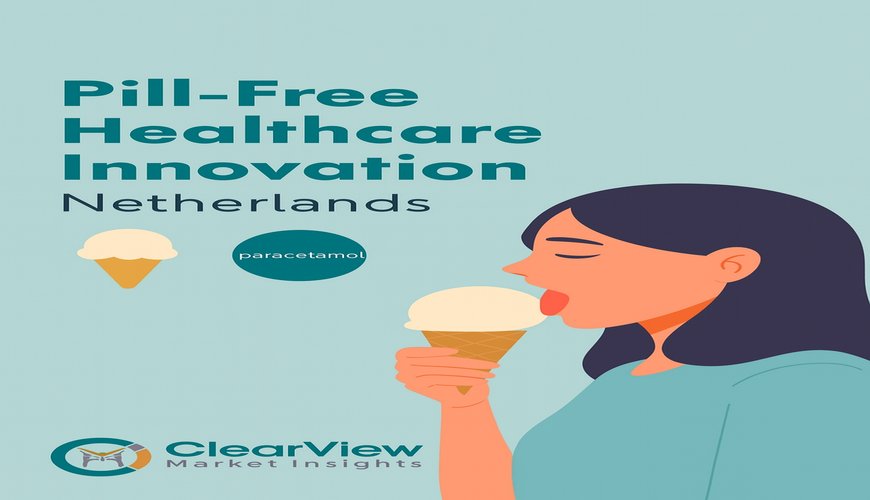Healthcare innovation is often associated with high-end technology, advanced diagnostics, or breakthrough pharmaceuticals. But sometimes, the most impactful ideas are surprisingly simple. A recent collaboration in the Netherlands between a community pharmacy and a local ice cream maker has gone viral for exactly this reason. Their goal? To transform the way patients — especially children, elderly individuals, and people with dysphagia — consume one of the world’s most common medications: paracetamol (acetaminophen).
The result of their experiment is both clever and comforting: paracetamol-infused vanilla ice cream, designed to help patients take medication without discomfort. This small-scale innovation is gaining global attention for reimagining medicine delivery in a more human-centered way.
Below, we explore the background, benefits, challenges, and future potential of this unusual yet meaningful healthcare innovation.
Difficulty swallowing tablets is a common challenge across age groups.
Studies indicate:
Up to 40% of adults report trouble swallowing pills.
Children and elderly patients often avoid medication due to taste or fear of choking.
Individuals with dysphagia struggle with traditional tablets, often requiring crushed medicines or liquid alternatives.
Recognizing this challenge, a Dutch pharmacy partnered with a nearby artisanal ice cream maker to create a cold, smooth, and easily consumable drug delivery option.
Their experiment focused on paracetamol, chosen because:
It is widely used and well-studied
It has a neutral taste
It dissolves easily
It is considered safe when dosed correctly
The result: a creamy vanilla ice cream that delivers a therapeutic dose of paracetamol, allowing patients to enjoy a familiar treat instead of forcing down a dry tablet
How Paracetamol Ice Cream Works
The concept is simple and effective:
-
Pharmaceutical-grade paracetamol is measured accurately by the pharmacy.
-
The ice cream maker blends the dosage into a custom vanilla base, ensuring consistency in each serving.
-
The ice cream is stored under controlled conditions to maintain both food safety and drug stability.
-
Patients receive a single-serve cup or scoop containing the precise dose prescribed.
This ensures the medication remains:
✔ Safe
✔ Palatable
✔ Easy to swallow
✔ Delivered in a familiar format
💡 Why This Matters: Real Benefits for Real Patients
1. Improves Compliance
Patients are more likely to take medicine when it tastes good and doesn’t feel like medicine.
This is especially important for:
Children
Elderly patients
Individuals with chronic illnesses
People with pill-swallowing anxieties
2. Reduces Risk of Choking
Ice cream melts naturally, making it one of the easiest mediums to swallow.
3. Enhances Patient Experience
Transforming medicine into a treat reduces psychological resistance and fear associated with tablets.
4. Could Inspire New Medicine Delivery Formats
This experiment opens the door for:
Ice cream-based antibiotics
Vitamin-infused frozen desserts
Cold-format pain relievers for post-surgery care
Palatable options for mental health medications
🌍 A Global Perspective on Patient-Friendly Medicine
This Dutch innovation aligns with a broader shift in healthcare:
Patient-centered design
Food-based medicine delivery
Personalized healthcare experiences
Countries like Japan and the USA already use flavored dissolvable strips, chewable tablets, and oral gummies to improve medication adherence.
But paracetamol ice cream adds a fresh new angle — using comfort food to enhance treatment.
⚠️ Challenges & Considerations
Despite its promise, this idea must address a few concerns before widespread adoption:
1. Dosage Consistency
Uniformity must be rigorously tested to prevent under- or overdosing.
2. Storage & Stability
Ice cream requires cold-chain storage, which may not be feasible in all clinics or pharmacies.
3. Regulatory Approval
This innovation sits between food and medicine, requiring compliance with both pharmaceutical and food-safety regulations.
4. Allergen & Sugar Concerns
Patients with diabetes or lactose intolerance may need alternative formulations.
🚀 The Future: Could Medicinal Ice Cream Become Mainstream?
While still a small local experiment, the concept has sparked global attention. Healthcare experts believe that food-based drug delivery systems may become an important niche in pharmaceutical innovation.
Companies engaged in nutraceuticals, pediatric medicine, and geriatric care may explore similar formats, supported by rising demand for:
Easier medication intake
Better patient compliance
Improved taste profiles
Personalized medicine
This Dutch collaboration is a reminder that innovation doesn’t always require cutting-edge technologies — sometimes, all it takes is creative thinking and a scoop of vanilla ice cream.

